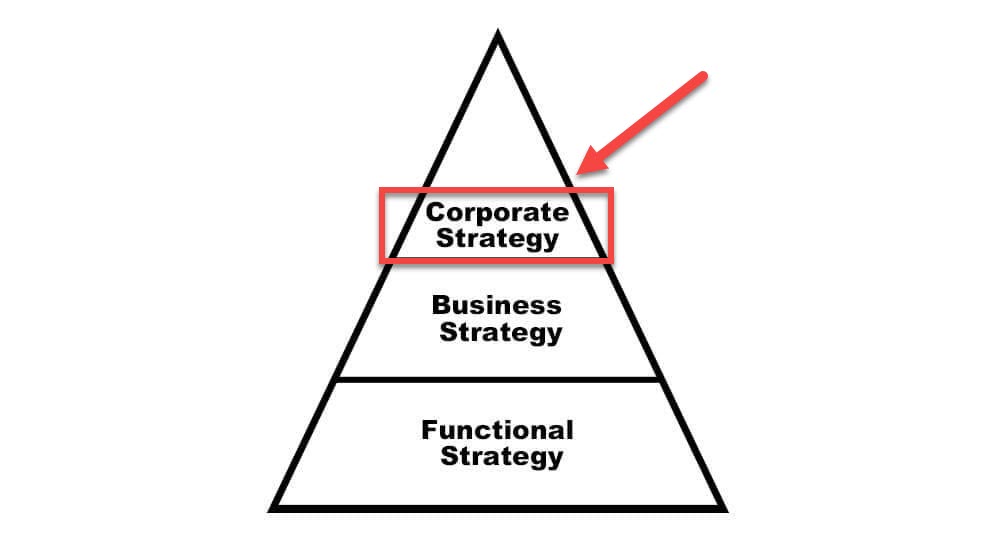Definition: A corporate level strategy is a multi-year and multi-tiered plan that outlines an organization’s business goals. This strategy defines the organization’s direction in the following years, such as expanding the business, increasing the profit margin, or wrapping up business from a certain market segment.
According to Michael Porter, a business can have three levels of strategies:
- Corporate Level Strategy
- Business Level Strategy
- Functional Level Strategy

Corporate strategy is at the top of the Porter pyramid, and today’s article will discuss this strategy in detail.
Types of Corporate Level Strategy
Michael Porter has defined four corporate level strategies:
- Stability Strategy
- Growth Strategy
- Retrenchment Strategy
- Combination Strategy
#1. Stability Strategy
Here, policymakers adopt an incremental progressive approach to be on the safe side. This helps them keep the business model safe and generates more revenue. Well-performing organizations use this strategy. This strategy does not require any drastic changes.
An example of this strategy can be slight product updates, price tweaking, new marketing strategies, etc.
#2. Growth Strategy
This strategy is also known as an expansion strategy.
A growth strategy is useful when an organization is planning on expansion, entering a new market, or launching a new product portfolio. This strategy can bring the organization more revenue and increase brand recognition.
Diversification, strategic alliance, acquisition, mergers, etc., are a few examples of this strategy.
This strategy is aggressive and can affect the organization financially if not planned well.
#3. Retrenchment Strategy
Organizations use retrenchment strategies to wrap up business from a certain market, sell the loss-making business unit, or liquidate assets. They use retrenchment strategies as a last resort when no other options are available.
Organizations can use retrenchment strategies because of loss-making units, shifting focus to other business models, unavoidable financial losses, etc.
An organization needs to do a SWOT (Strength, Weakness, Opportunity, and Threats) analysis before adopting a retrenchment strategy.
#4. Combination Strategy
Here, organizations can use any combination of the three strategies discussed to plan their business model.
Big organizations use different strategies to achieve their goals. Hybrid strategies allow them to take advantage of individual strategies, providing flexibility in decision-making and achieving organizational objectives.
Characteristics of Corporate Level Strategy
- Long Term: Corporate strategies are formulated for the long term.
- Uncertain: Being long term and broad by nature, corporate strategy is uncertain.
- Dynamic: Corporate strategies are dynamic and adapted to market conditions.
- Far-Reaching: Corporate strategies are broad, far-reaching, and affect the whole organization.
- Decided at the Top Level: Corporate level strategies are created at the top level of the organization.
Benefits of Corporate Level Strategy
The benefits of corporate level strategy are as follows:
- It allows organizations to scale their business
- It allows businesses to be proactive
- It provides businesses with a strategic direction
- It lets businesses adapt to market conditions
- It improves the decision-making process
- It increases efficiency
- It increases profitability
- It makes businesses durable and reliable
Summary
A corporate level strategy is a multi-tiered process that organizations use to outline an action plan, hit the target, and achieve the goal. These strategies are broadly defined and help organizations plan their business and functional level strategies.
